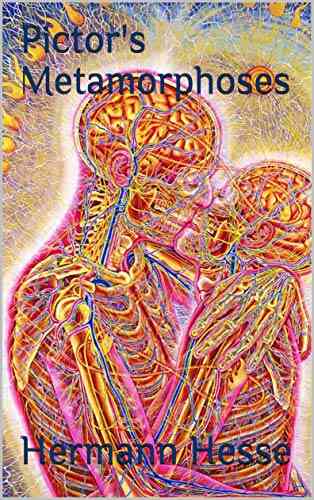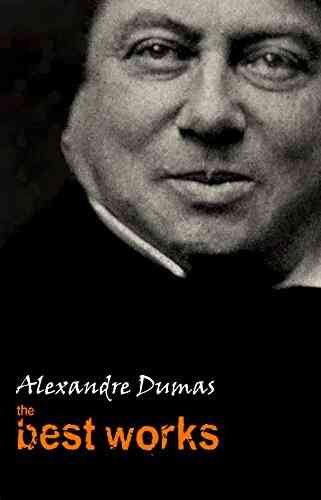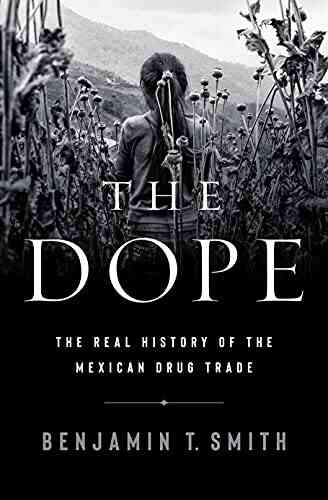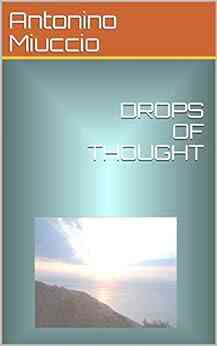Pictor Metamorphoses Hermann Hesse: The Captivating Journey of Art and Transformation

When it comes to unveiling the innermost depths of the human spirit, few authors have been able to reach the level of profound introspection and emotional insight that Hermann Hesse achieved. Throughout his extensive literary career, Hesse's works have captured the essence of human existence, introspection, and the transformative power of art. One of his lesser-known novellas, Pictor Metamorphoses, invites readers on a mesmerizing journey into the realms of art, life, and self-discovery.
Pictor Metamorphoses introduces us to the enigmatic character of Pictor, a talented painter who finds himself in the midst of an elusive creative crisis. Although Pictor had once possessed a burning passion for his art, he now struggles to find purpose and inspiration. Frustrated and disillusioned, he embarks on a transformative journey that will forever change his perception of the world and his art.
A central theme of Pictor Metamorphoses is the transformative power of art. Hesse crafted this novella as a vehicle to explore the idea that art has the potential to shape not only the external world but also the internal landscape of the artist. Through Pictor's journey, we witness the evocative interplay between art and self-discovery.
4.2 out of 5
| Language | : | English |
| File size | : | 3446 KB |
| Text-to-Speech | : | Enabled |
| Screen Reader | : | Supported |
| Enhanced typesetting | : | Enabled |
| Word Wise | : | Enabled |
| Print length | : | 9 pages |
| Lending | : | Enabled |
Throughout the novella, Hesse skillfully employs vivid descriptions to bring Pictor's artistic creations to life. From the first brushstroke to the final masterpiece, readers are invited to immerse themselves in the intricate details and emotional depth of Pictor's art. Hesse's masterful prose acts as a conduit, bridging the gap between the reader and Pictor's imaginative realm.
Furthermore, Hesse delves into the concept of metamorphosis, both artistic and personal. As Pictor immerses himself in his work, he undergoes a profound transformation, shedding old beliefs and unveiling hidden aspects of his psyche. The reader becomes witness to the raw, unfiltered chaos of an artist's soul as it evolves and transcends its previous limitations.
The narrative of Pictor Metamorphoses is imbued with symbolism and allegory, which adds depth and layers of meaning to the story. The novella functions as an allegorical exploration of the creative process and the metamorphosis of the artist's soul. Each stroke of Pictor's brush becomes a metaphorical act of self-examination and reformation.
Moreover, Pictor Metamorphoses delves into the eternal conflict between art and society. Pictor's struggle with societal expectations and the pressures placed upon artists resonates with anyone who has ever felt confined by society's norms. Hesse skillfully highlights the tension between individual artistic expression and conformity, raising important questions regarding the true purpose and significance of art in society.
As the novella reaches its climax, Hesse masterfully merges the boundaries between reality and the artistic realm. Pictor's journey becomes an immersive experience for both the character and the reader, blurring the lines between what is real and what is imagined. This narrative technique adds a sense of allure and unpredictability to the story, mirroring the inherent mystery within the creative process.
Ultimately, Pictor Metamorphoses explores the profound transformative power of art. Hesse invites readers to embark on a journey of self-discovery, challenging conventional narratives and urging them to explore the depths of their own creative potential. The novella serves as a testament to the unyielding force of the human spirit and its capacity for growth and metamorphosis.
, Hermann Hesse's Pictor Metamorphoses offers readers an exquisite exploration of art, self-discovery, and the transformative power of the creative process. Through Hesse's masterful storytelling and introspective prose, readers are whisked away on a captivating journey alongside the enigmatic painter Pictor. This novella serves as a reminder of the everlasting impact of art on the human experience and the potential for personal transformation inherent within us all.
4.2 out of 5
| Language | : | English |
| File size | : | 3446 KB |
| Text-to-Speech | : | Enabled |
| Screen Reader | : | Supported |
| Enhanced typesetting | : | Enabled |
| Word Wise | : | Enabled |
| Print length | : | 9 pages |
| Lending | : | Enabled |
If it wasn't written in spring of 1922, a full sixteen years before Albert Hofmann discovered LSD, one might have thought that “Pictor's Metamorphosis” was the product of a pleasant acid trip!
Hermann Hesse wrote “Pictor's Metamorphoses'’ a couple of months after he finished Siddhartha. He dedicated it to Ruth Wenger, whom he was courting at the time. The short fairytale display Hesse's lifetime fascination with fairytales, fantasy and the dream world.
Hesse made the short fairytale into a limited edition watercolor book with beautiful illustrations. He gave copies to Ruth, distributed a few copies to a small circle of friends and offered a few copies for sale to local bookshops and donated the proceeds to charity.
Ruth Wenger met Hermann Hesse in 1919 in Ticino while she was spending the summer with her parents in the south of Switzerland. She was 21 years old at the time, Hermann was 42. For Hermann, it was at first sight, he immediately proposed a marriage. Ruth had her doubts.
Ruth felt that both their interests and character peculiarities were too different. Later, they saw each other again in Basel, where Ruth studied singing, flute and piano. Hesse continued his courtship and divorced his first wife, Maria Bernoulli in 1923.
Ruth relented and the couple got married on January 11, 1924. Their marriage lasted three years and they got divorced in 1927.
Most critics agree that "Pictor's Metamorphoses" is an allegorical account, in fantasy form, of Hesse’s love affair with Ruth. The painter, entering the paradise of Ticino, first lives alone as a tree and then, recognizing his mistake, reenters the natural cycle of transformations by attaching himself to a beautiful young woman.
It is significant that, apart from the limited edition, Hesse did not allow this work to be published until a facsimile edition of an early version was brought out in 1954. The original German title of the fairytale is "Piktors Verwandlungen"
Do you want to contribute by writing guest posts on this blog?
Please contact us and send us a resume of previous articles that you have written.




















Light bulbAdvertise smarter! Our strategic ad space ensures maximum exposure. Reserve your spot today!

 Julio CortázarLongarm Double Frontier Justice: The Ultimate Collection for Western Fiction...
Julio CortázarLongarm Double Frontier Justice: The Ultimate Collection for Western Fiction...
 J.R.R. TolkienOf Truths Mui Thriller: Revealing an Unforgettable Journey Full of Suspense...
J.R.R. TolkienOf Truths Mui Thriller: Revealing an Unforgettable Journey Full of Suspense... Kendall WardFollow ·19.7k
Kendall WardFollow ·19.7k Alexandre DumasFollow ·14.2k
Alexandre DumasFollow ·14.2k Devon MitchellFollow ·10k
Devon MitchellFollow ·10k Arthur Conan DoyleFollow ·16.6k
Arthur Conan DoyleFollow ·16.6k Charles DickensFollow ·11.5k
Charles DickensFollow ·11.5k Levi PowellFollow ·14.9k
Levi PowellFollow ·14.9k Junot DíazFollow ·5.9k
Junot DíazFollow ·5.9k Edgar HayesFollow ·11.6k
Edgar HayesFollow ·11.6k

 Dwayne Mitchell
Dwayne MitchellSaving The Maldives: The Floating Island
The Maldives, known for...

 Ethan Mitchell
Ethan MitchellManaging The Production Hour: Mastering Efficiency and...
As businesses strive to meet growing demands...

 Virginia Woolf
Virginia WoolfThe Food Lab: Better Home Cooking Through Science
Have you ever wondered why some...

 Jeff Foster
Jeff FosterThe Darling Songbirds: The Songbirds of Darling Bay
When it comes to enchanting melodies and...
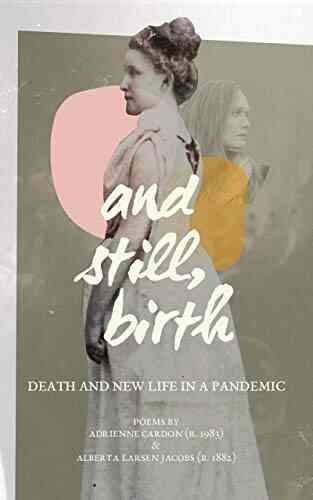
 Eli Blair
Eli BlairDeath And New Life In Pandemic
The COVID-19 pandemic has brought about...

 Dave Simmons
Dave SimmonsThe Unstoppable Nathan Run: A Thrilling Journey Into John...
When it comes to gripping thriller novels,...

 Amir Simmons
Amir SimmonsDistant Horizon Backyard Starship: Exploring the Cosmos...
The mysteries of the universe...
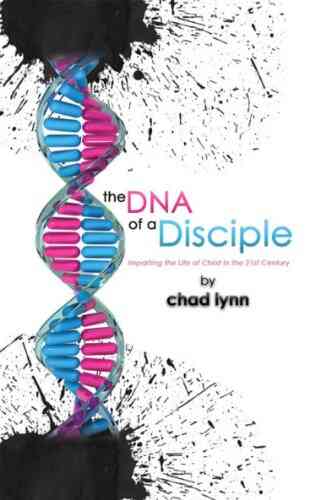
 Simon Mitchell
Simon MitchellUnveiling the Secrets: The DNA of a Disciple - A...
Do you ever wonder what it takes to become a...

 Samuel Taylor Coleridge
Samuel Taylor ColeridgeThe Epic Tale of Snake River Slaughter: Matt Jensen, The...
The Snake River, winding through the...

 Ray Blair
Ray BlairThe Ultimate Covid Alphabet For Teachers: The Key to a...
With the Covid-19 pandemic still ongoing,...

 Gage Hayes
Gage HayesFor The Sake Of Family: Why Prioritizing Our Loved Ones...
Family is the backbone of...
4.2 out of 5
| Language | : | English |
| File size | : | 3446 KB |
| Text-to-Speech | : | Enabled |
| Screen Reader | : | Supported |
| Enhanced typesetting | : | Enabled |
| Word Wise | : | Enabled |
| Print length | : | 9 pages |
| Lending | : | Enabled |


